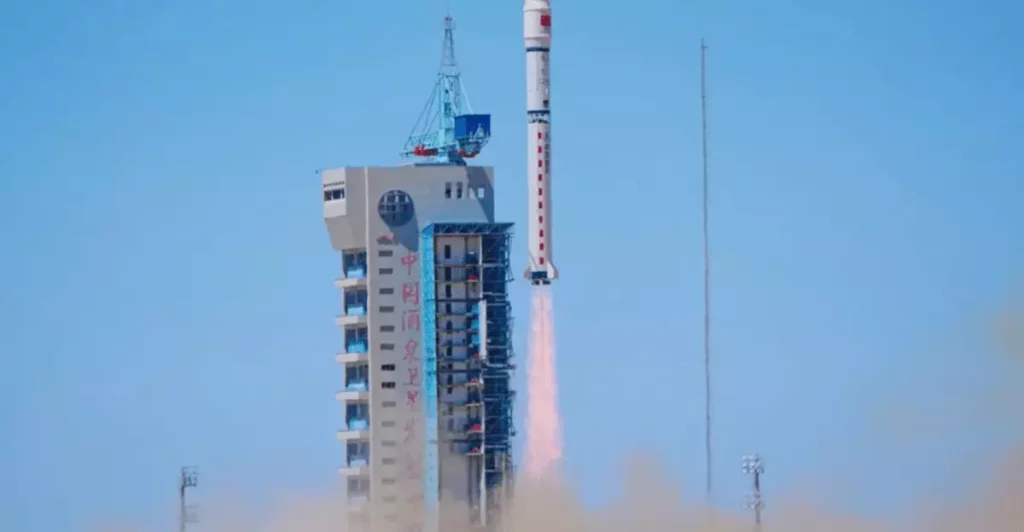In a world increasingly reliant on artificial intelligence, China’s intention to launch a satellite network designed for AI operations marks an unprecedented milestone in technology. The recent deployment of twelve satellites signals the initial step of a broader ambition to establish a colossal network comprising 2,800 satellites. This project, spearheaded by ADA Space in collaboration with Zhijiang Laboratory, carries the potential to transform not just data processing but our entire approach to celestial technology.
Underpinning this visionary initiative is the “Star Compute” program, a framework that seeks to unleash the true potential of AI in space. Each of the pioneering satellites is not simply a vessel for data; they are equipped with advanced AI models that boast an astounding 8 billion parameters. This means that each satellite surpasses current computational standards, delivering a processing capability of 744 tera operations per second (TOPS) and collectively amassing 5 peta operations per second (POPS). Such figures dwarf the capabilities of existing computing technology, including mainstream platforms like Microsoft’s Copilot.
The Communications Revolution
The groundbreaking aspect of this satellite network lies in its use of high-speed laser technology for communication. With inter-satellite data transfer rates reaching up to 100 Gbps, this development promises to revolutionize space communication. By drastically reducing latency, these satellites will enable near-instantaneous data sharing and processing, facilitating real-time analytics that can transform various sectors.
Moreover, the satellites are designed to host scientific payloads, extending their utility beyond mere data collection. For instance, the potential to incorporate X-ray polarization detectors to capture elusive cosmic phenomena such as gamma-ray bursts adds a new dimension to the scientific community’s capabilities. Not only will this advance our understanding of the universe, but it also opens avenues for leveraging AI in monitoring space events, thus pushing the boundaries of human knowledge to greater heights.
Challenges with Traditional Systems
Current satellite systems are severely hampered by their inefficiencies, with less than 10% of satellite-derived data successfully transmitted to ground stations. Issues such as bandwidth limitations and the necessity for suitable terrestrial reception facilities pose significant challenges. By introducing a network of AI satellites equipped with intrinsic processing capabilities, China aims to mitigate these issues, ensuring that crucial data doesn’t just exist in the void of space but is actionable in real-time. This innovation is not only about gathering data; it’s about transforming unrefined information into actionable insights.
The implications of such advancements are nothing short of monumental. As nations like China leap into the forefront of AI and space technology, it creates a pressing need for others to adapt swiftly. The risk is a technological arms race, where countries vie for dominance in space infrastructure and AI capabilities, thereby reshaping global power dynamics.
Global Strategic Implications
China’s foray into this ambitious cosmic project represents a significant pivot in international relations, particularly in terms of military and strategic influence. The ability to deploy such advanced technology may grant a distinct advantage—not just in scientific exploration, but also in geopolitical maneuvering. Nations equipped with superior satellite technology could wield unprecedented influence over global affairs, ranging from research initiatives to strategic military advantages.
As this monumental project progresses, the geopolitical chessboard will evolve. Countries must respond and potentially rally their own resources towards countering this technological leap. The interconnectedness of science and politics becomes increasingly pronounced as advancements in space technology translate not just to knowledge but to power.
Ultimately, China’s initiative sets a challenging precedent on the international stage, compelling other nations to re-evaluate their technological strategies. The stakes are high, and the consequences of this ambitious program will reverberate through the corridors of power for years to come.
By harnessing the incredible potential of AI and advanced satellite technology, China is carving out a new era not simply defined by scientific achievement but underscored by geopolitical stratagem. As we embrace this shift toward a more technologically integrated cosmos, the ramifications will shape our very understanding of progress and power.









Leave a Reply